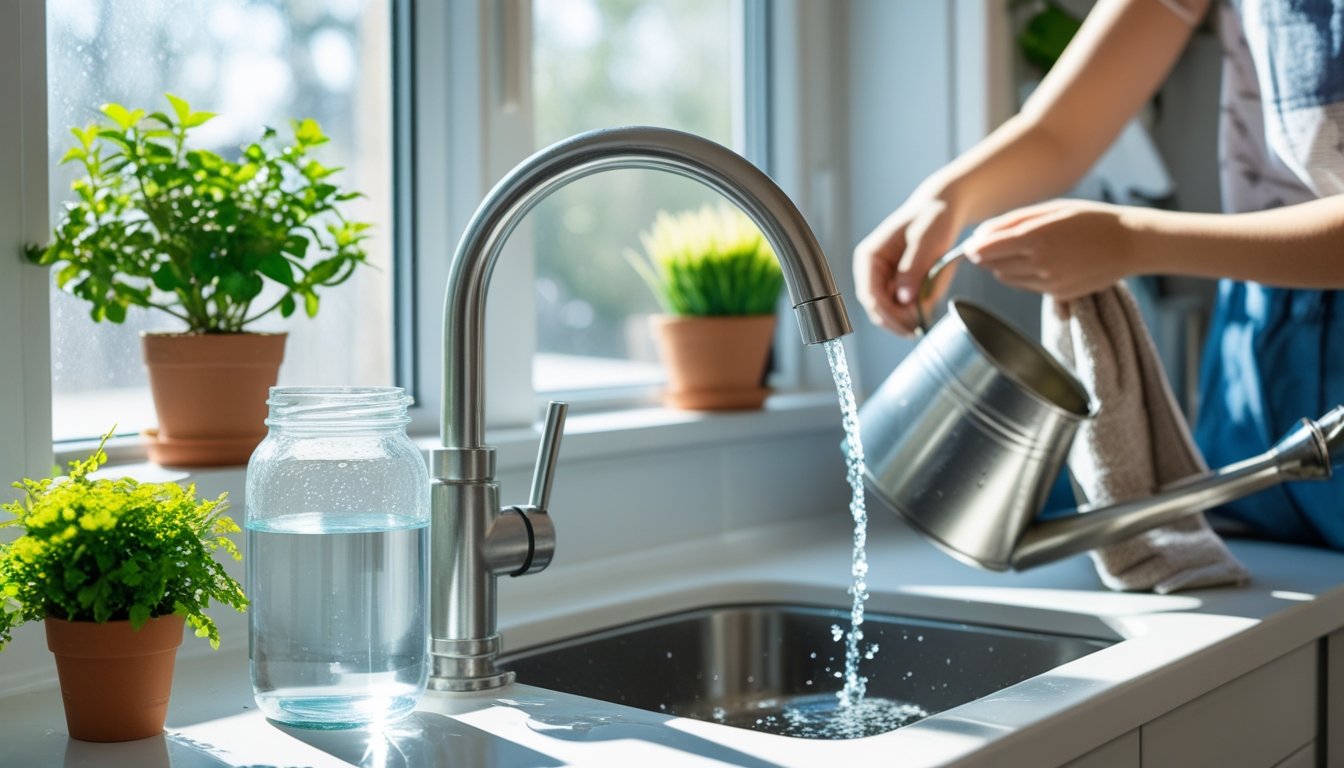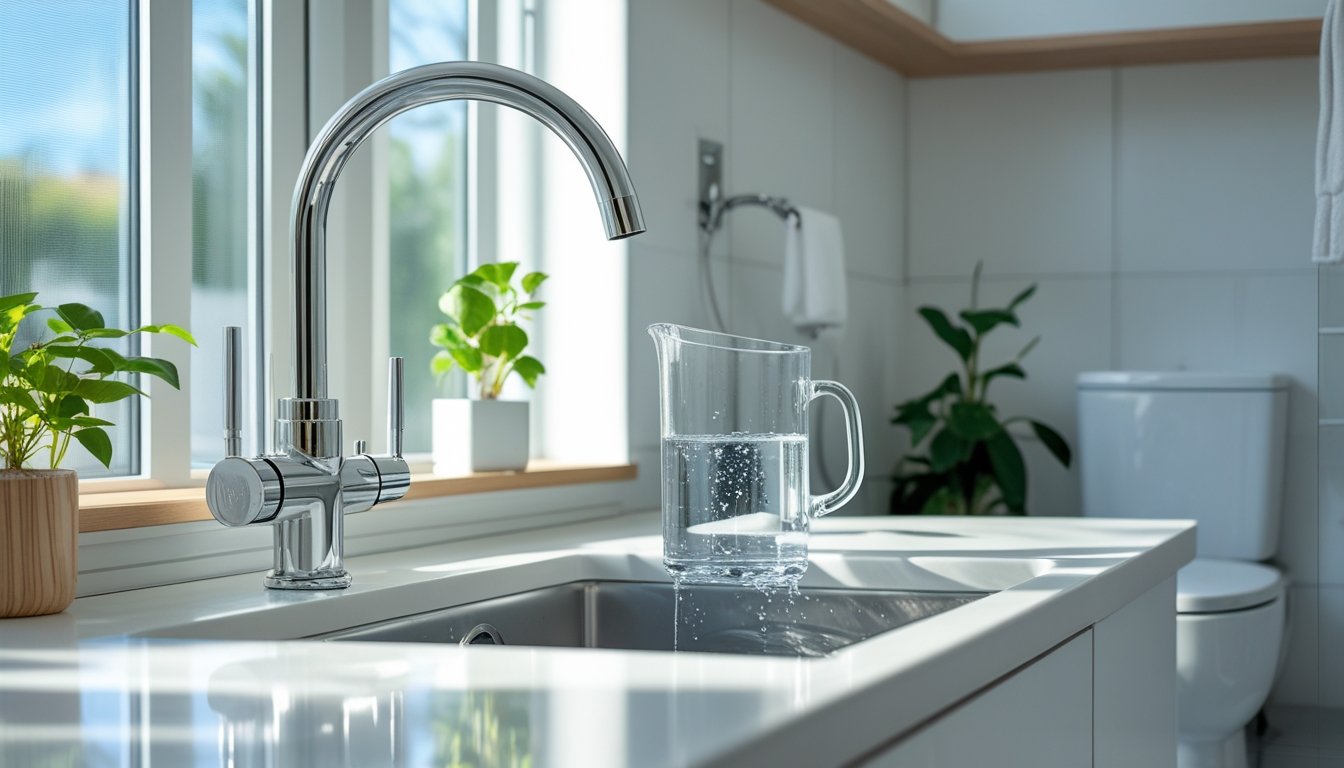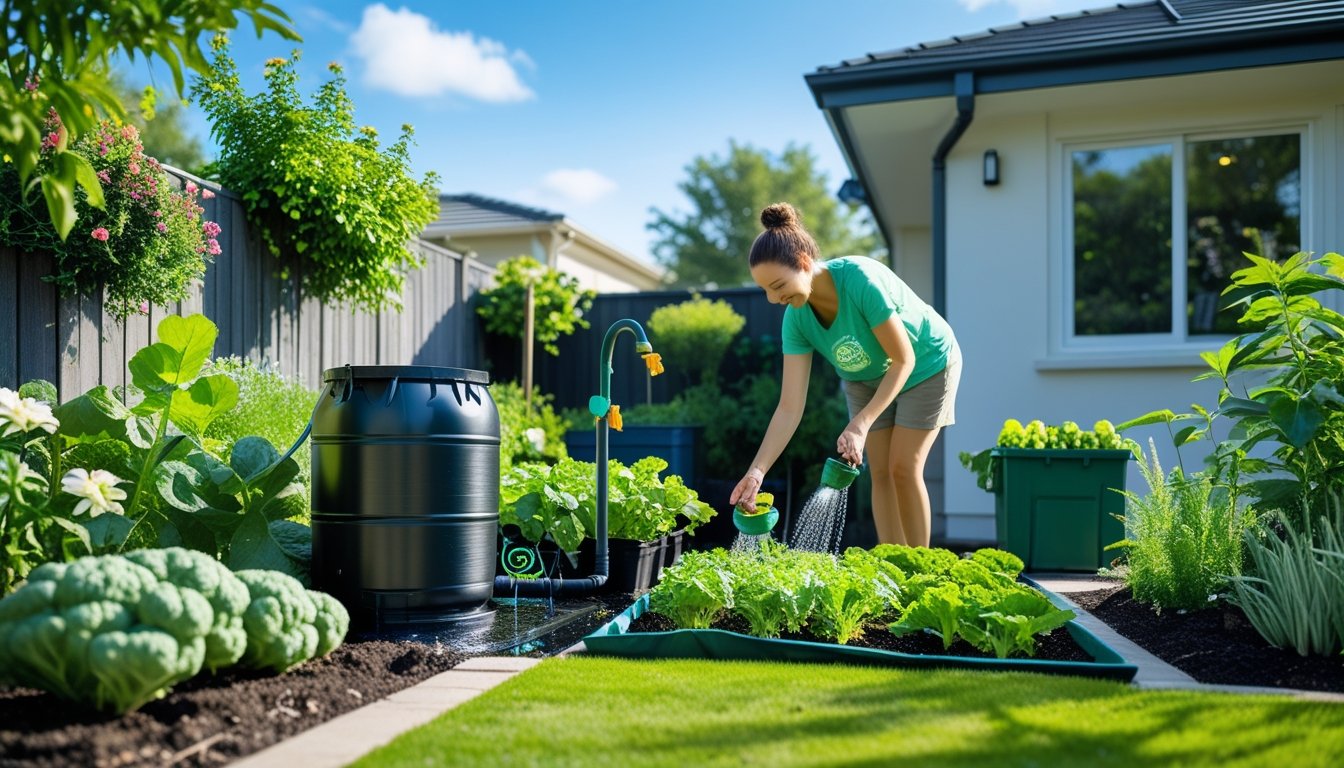Late updated: 02 Aug 2025 10:08
Written by: Sarah Hollister
Eco-Friendly Tips For Reducing Household Water Use: Simple Strategies for Every Home
Embarking on a journey to reduce our household water consumption offers myriad benefits. Implementing eco-friendly water-saving strategies not only conserves resources but also lowers monthly bills and supports environmental sustainability. Many of us may overlook the amount of water wasted daily, but by incorporating simple changes into our routines, we can make a significant impact.

Our home interiors—kitchens, bathrooms, and laundry rooms—account for a substantial portion of water use. From installing low-flow fixtures to being mindful of our water habits, there are numerous ways to reduce water consumption effectively. Moreover, proper outdoor water management can lead to considerable savings while maintaining a beautiful garden.
Understanding the impact of these practices enhances our commitment to conservation. By beginning to implement these strategies today, we align our day-to-day lives with the broader goals of sustainability and environmental responsibility.
Key Takeaways
- Simple changes indoors can significantly reduce water consumption.
- Outdoor water management conserves resources while maintaining garden beauty.
- Aligning daily habits with sustainable practices benefits the environment.
Key Eco-Friendly Strategies for Reducing Household Water Use

Water conservation in our homes is not only vital for environmental preservation but also beneficial in reducing our water bills. Let's explore key strategies, from detecting leaks to using water-efficient appliances, to make our households more water-wise.
Detecting and Fixing Household Leaks
Identifying and repairing leaks is crucial for water conservation. A dripping tap might seem minor but can waste over 5,500 litres annually. Our first step is to regularly check for leaks by monitoring the water meter. Inspect taps, showerheads, and toilets for any drips or leaks. Fixing even the smallest leaks can potentially save significant amounts of water.
Installing faucet aerators or WaterSense aerators can reduce water flow without compromising pressure. These are cost-effective solutions to improving water efficiency.
Optimising Bathroom Water Efficiency
Bathrooms typically use the most water in our homes. Installing low-flow showerheads is a simple yet effective solution. They reduce water usage significantly, without affecting the shower experience.
Toilets account for a large portion of indoor water use. Opting for dual-flush systems allows us to control the flush volume, conserving water with each use. Additionally, placing a water displacement device in the toilet tank can help reduce water consumption further.
Water-Saving Solutions in the Kitchen and Laundry
In the kitchen, using water-efficient appliances can contribute significantly to water conservation. Consider investing in a dishwasher with a high-efficiency rating. Running full loads maximises water use efficiency. Additionally, we should fix drips and install aerators on kitchen taps to manage water flow.
In the laundry, choosing a high-efficiency washing machine enables reduced water usage per cycle. Opt for cold water settings to further conserve energy and reduce greenhouse gas emissions.
Adopting Shorter Showers and Efficient Habits
Shorter showers are a direct and impactful way to conserve water. Setting a timer can encourage efficient showering habits, aiming for under 5 minutes.
Develop habits that promote conservation, such as turning off the tap while brushing teeth or shaving. Encouraging household members to adopt these practices helps in keeping water usage in check. Together, these small changes lead to significant water savings over time.
Sustainable Outdoor Water Management

Efficient management of outdoor water use is essential for sustainability. By employing techniques such as drip irrigation, rainwater harvesting, and strategic plant selection, we can significantly reduce water consumption whilst maintaining a vibrant garden.
Drip Irrigation and Smart Garden Watering
Drip irrigation systems offer a highly efficient solution to water gardens effectively. These systems deliver water directly to the plant roots, reducing waste by minimising evaporation and runoff. By tailoring the water delivery to specific plant needs, we can ensure each plant receives only the necessary amount of water.
Smart garden watering technology further enhances this approach. Devices such as soil moisture sensors and automatic timers optimise watering schedules, conserving water use without compromising plant health. With climate change and increasing water scarcity, integrating modern technology with traditional irrigation methods allows us to maintain lush gardens responsibly.
Rainwater Harvesting and Utilising Collected Water
Rainwater harvesting provides an excellent method for augmenting our water supplies during drier periods. Setting up a rainwater harvesting system involves collecting runoff from rooftops and storing it in tanks or barrels. This collected rainwater can be used for irrigation or other non-potable applications, reducing reliance on municipal supplies.
The implementation of rain barrels or more sophisticated underground cisterns makes this approach flexible and scalable. Utilising collected rainwater helps lower utility bills and conserves valuable water resources, ensuring sustainability even in periods of water scarcity. By investing in rainwater systems, we create a more resilient household water management strategy.
Choosing Drought-Resistant Plants and Mulching
Selecting drought-resistant plants is a smart approach to sustainable gardening. These plants require less water, adapting well to dry conditions. Some examples include lavender, succulents, and certain ornamental grasses. Their ability to thrive with minimal irrigation reduces overall water consumption significantly.
Mulching complements this strategy by retaining soil moisture and suppressing weeds. A variety of mulch options, including organic materials such as wood chips and bark, can be used based on garden aesthetics and requirements. By choosing appropriate plants and combining them with effective mulching techniques, we enhance our garden's resilience against water scarcity and improve its environmental sustainability.
Frequently Asked Questions
In our journey towards water conservation, various practical methods and devices can assist in reducing household water use. Rainwater harvesting and fixing leaks play crucial roles, as do gardening and sustainable long-term practices impacting our environment positively.
What are practical methods for lowering daily water usage in households?
Lowering daily water use can be as simple as adopting everyday habits. We can take shorter showers, turn off taps while brushing teeth, and only run dishwashers and washing machines with full loads. Collecting water while waiting for the shower to warm up and using it for plants also helps conserve water.
Can you suggest effective water-saving devices for domestic use?
Several devices can significantly reduce water consumption at home. Installing aerated taps and low-flow showerheads, as well as using water-efficient appliances certified by schemes like WaterSense, can make a substantial difference. Smart irrigation controllers for gardens also ensure water is used efficiently.
What are the benefits of rainwater harvesting for personal residences?
Harvesting rainwater allows us to utilise a natural resource efficiently. It reduces demand on main water supplies and lowers water bills. Collected rainwater can be used for gardening, toilet flushing, or even laundry, depending on the system set up in your home.
How does fixing leaks contribute to home water conservation?
Leaks waste a surprising amount of water, with small drips adding up over time. By fixing faulty taps and pipes, we prevent unnecessary water loss, which directly helps in cutting household water use. Regular maintenance ensures the system remains efficient and minimises wastage.
In what ways can gardeners practise water sustainability?
Gardeners can practice water sustainability by implementing drought-resistant plants, using mulch to retain soil moisture, and watering early in the morning or late in the evening to minimise evaporation. Drip irrigation systems also deliver water directly to roots, reducing waste.
What are the long-term impacts of water conservation on the environment?
By conserving water, we reduce the strain on local water bodies, decrease the energy used for water treatment and transportation, and lessen pollution from wastewater. Over time, these efforts contribute to healthier ecosystems and help mitigate the effects of climate change.
